May 2010
1975 Triumph T160 Trident 750

I was visiting friends in Blenheim and a man whom I had worked for on his Rocket 3 wanted to show me his newest bike - a T160 Trident.
This is entirely my language so I was keen to view the bike.
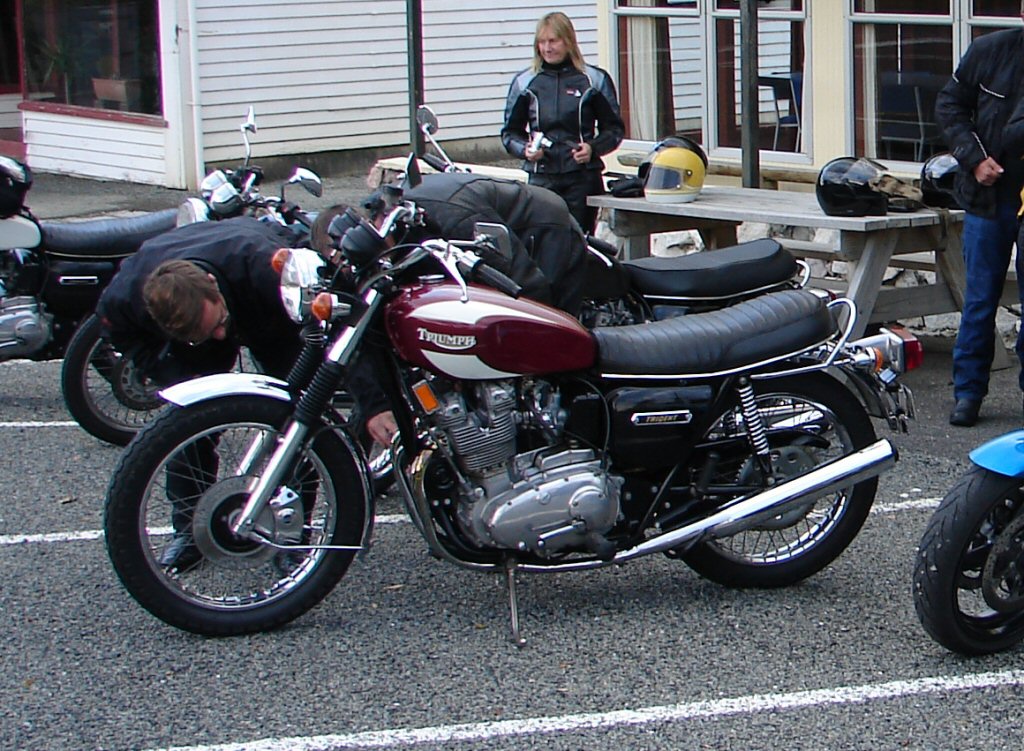
The bike had come at a fairly premium price as it had been a fairly comprehensive restoration. It looked to be mostly as you would want it, but as it turned out, there were a few issues that my friend needed to be sorted.
One involved the reluctance of the electric start to function well, as - if you have one - you would rather it worked as expected than not. The bike was duly delivered to my workshop and I began some investigations. The immediatey obvious thing was that the wiring was not as it should be.
This bike featured a Boyer electronic ignition system, and they are known to be somewhat picky about how many volts they receive. Despite fitting a new battery, the bike had still refused to fire up on the electric start. I discovered that a number of volts were going missing inbetween the battery and the ignition unit. I found out where..
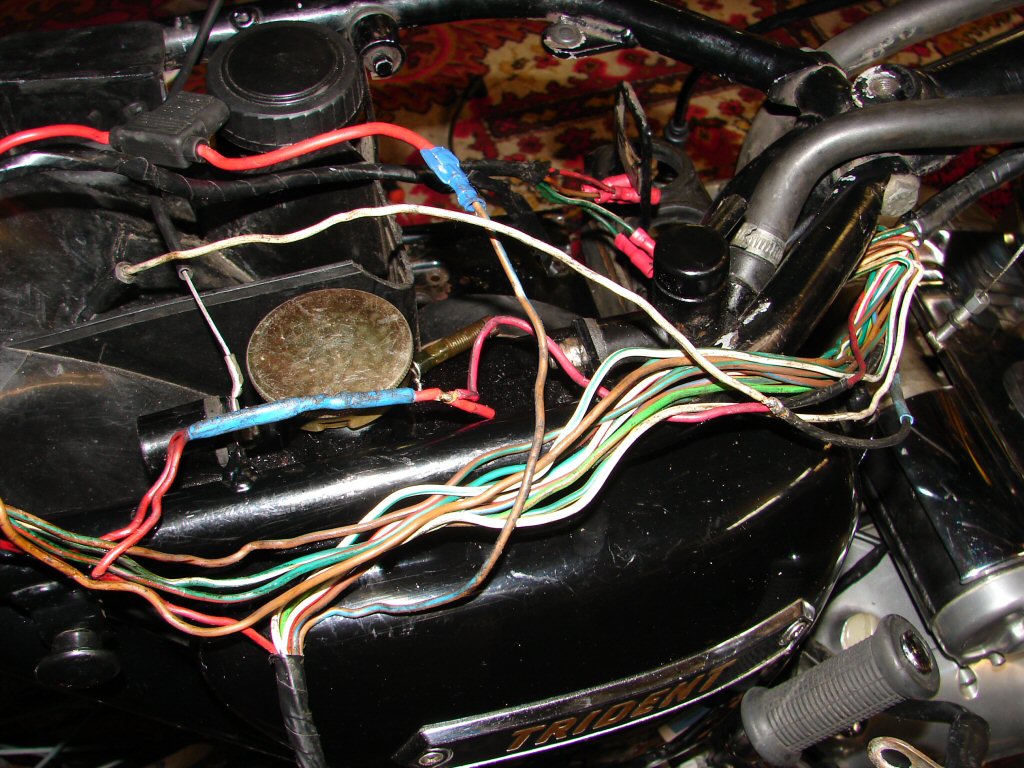
If you have any appreciation of wiring you will notice that there are a few wires soldered together here that do not look very happy. Or even to be the same colour. This makes troubleshooting rather difficult, and it is only after removing the insulation tape wrapping the loom that such deviant behaviour is revealed. And it was. So I made some changes.
Even with the best intentions, old wiring looms can have trouble conducting current all the way up the front, through various switches, and then down the back where the electronic ignition unit usually has to be mounted - because there are a few spaces back there. Such was the case, and the wiring harness had been unable to supply enough volts to the ignition unit for it to even be bothered performing. Even with a new battery. Mind you - the various weird soldered joints did leave something to be desired. Like sense.
My standard response to this situation, regardless of how the wiring looks, is to fit a relay that allows full battery voltage to reach the ignition. As it happened, the owner had decided that the Boyer was not going to be his best solution, and had supplied a new Trispark electronic ignition system for me to fit. Which I did. With a relay. Mid picture.
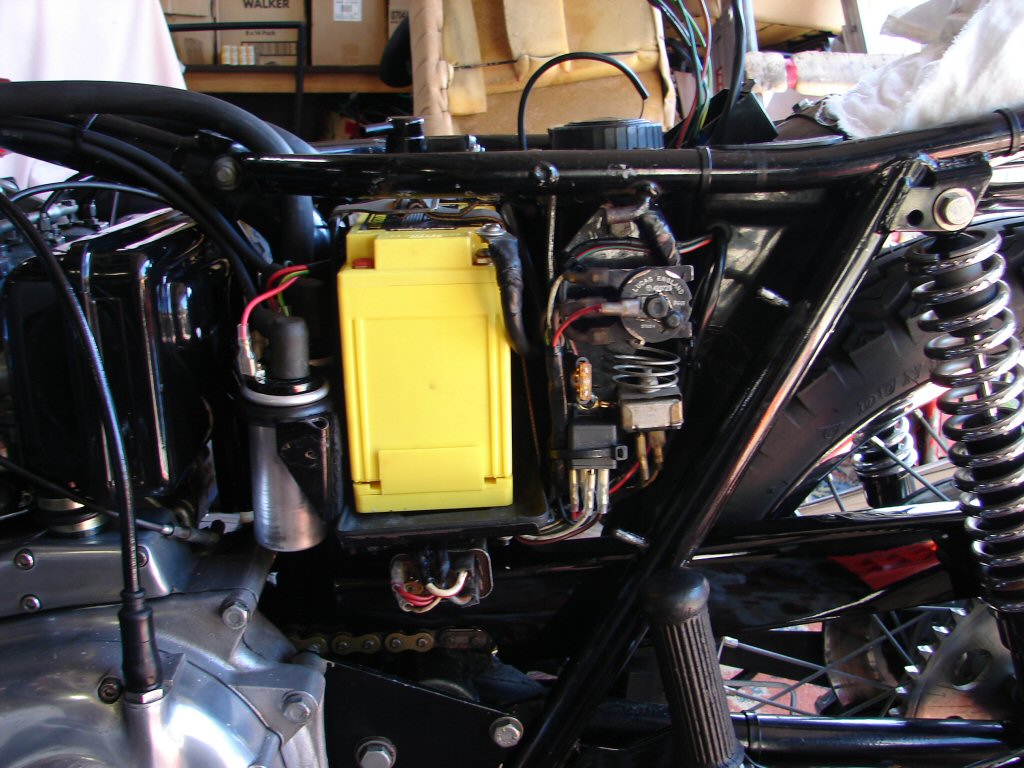
Trispark unit was mounted in the original tool area under the seat - which would not require tools if I did this job properly. Here's hoping..
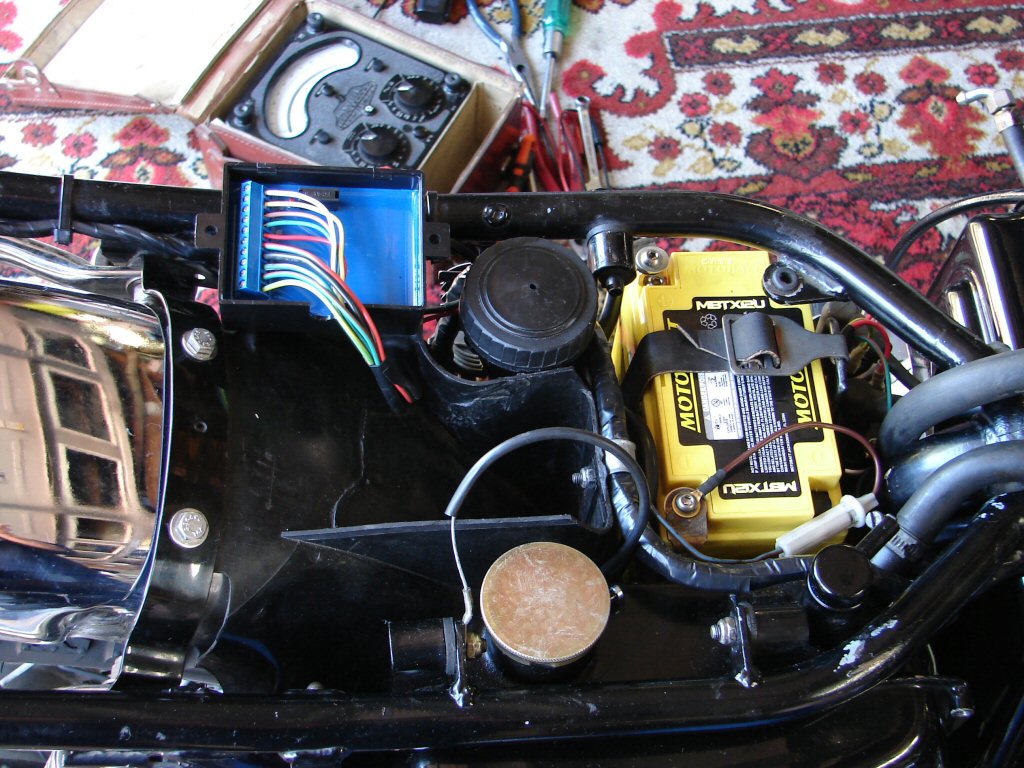
There were however a number of other issues that I had discovered during the work in progress. For example, the oil seal behind the ignition in the timing cover was leaking..
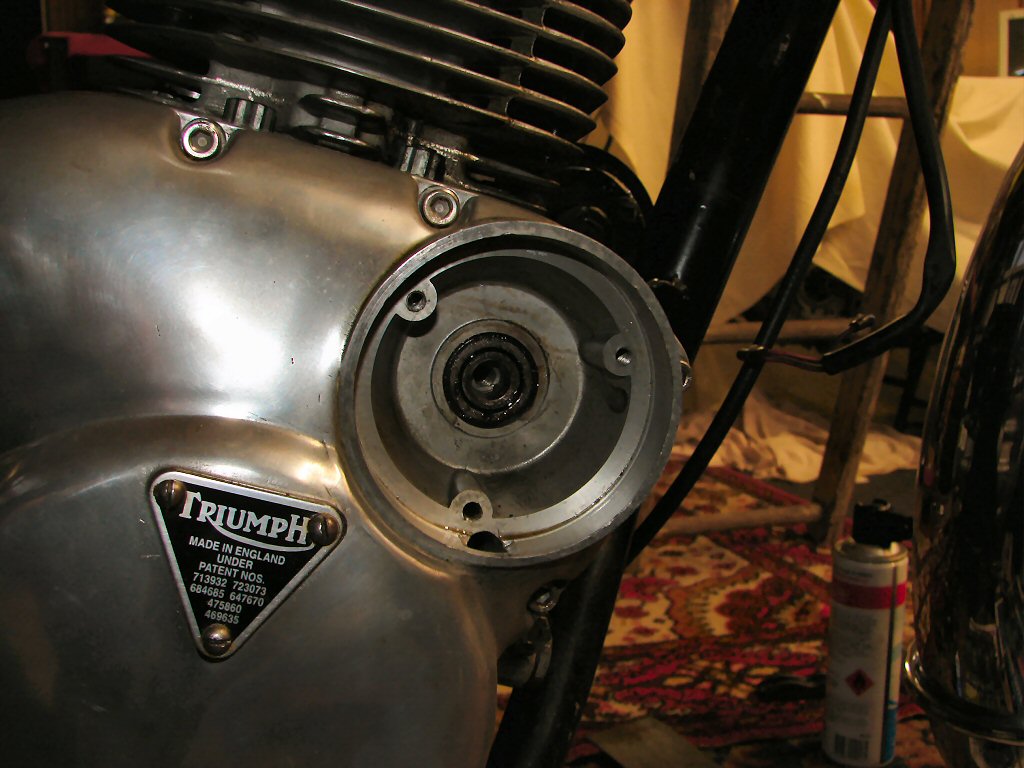
That required plucking the timing cover and fitting a new seal. Did that.
Also, the kickstart lever was resting in the wrong place..
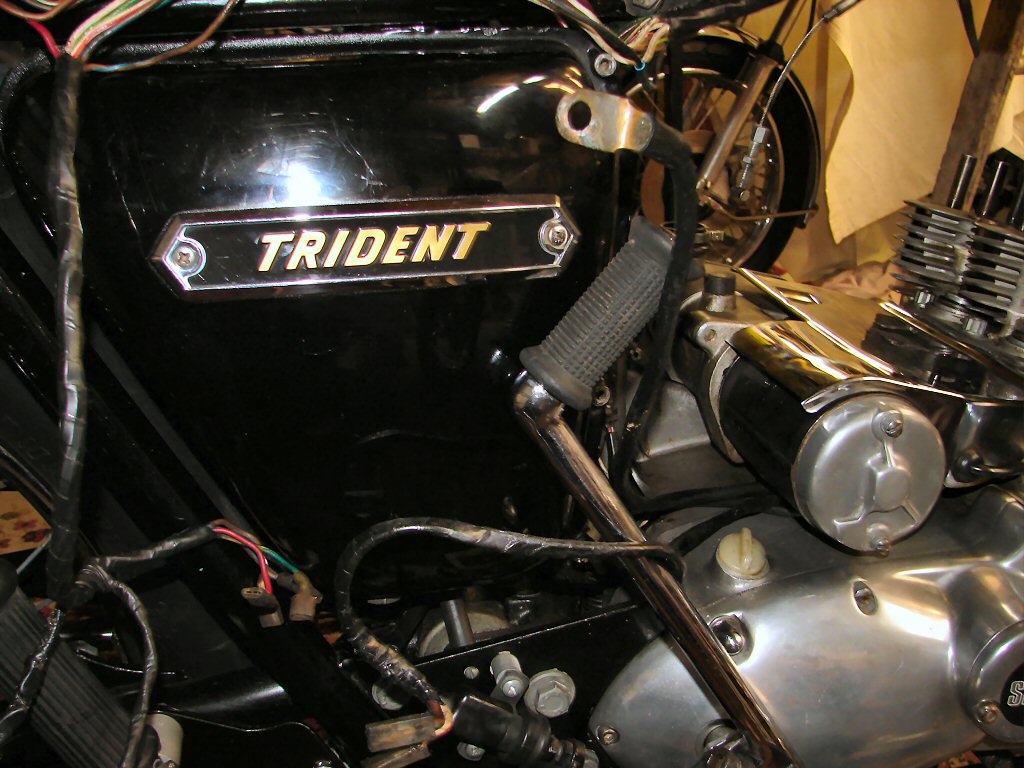
This is simply because the cotter pin has been fitted from the wrong side. Remove, turn around, now looks like this..
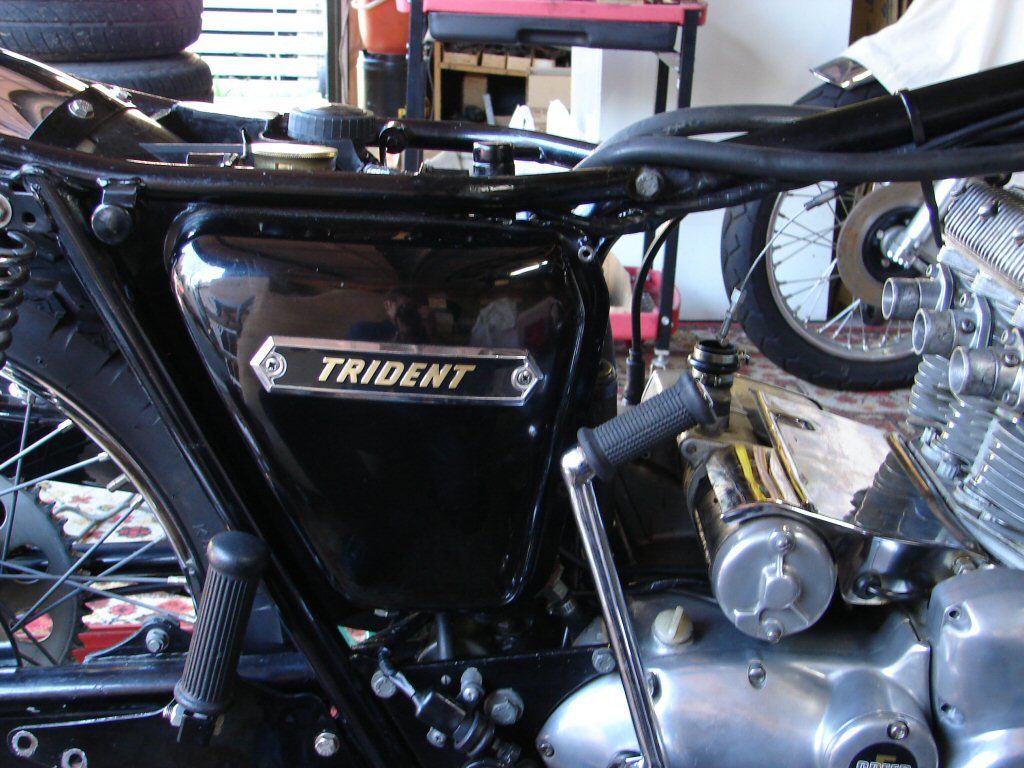
Such issues may seem a trifle pedantic, but you must remember that this motorcycle has changed hands for a premium price because it has undergone a "comprehensive" restoration. I can only assume that it has been a comprehensive restoration by someone who has rather small knowledge of this model bike.
But then it got more complicated.
There was a problem with smoke from the exhaust, so that entailed removing the cylinder head to investigate. Turned out a valve stem seal had popped off the guide, so at least the remedy was simple. New head gasket was fitted, plus solid rockerbox gaskets to replace the original type which tend to disintegrate with time and inevitably cause more oil leaks.
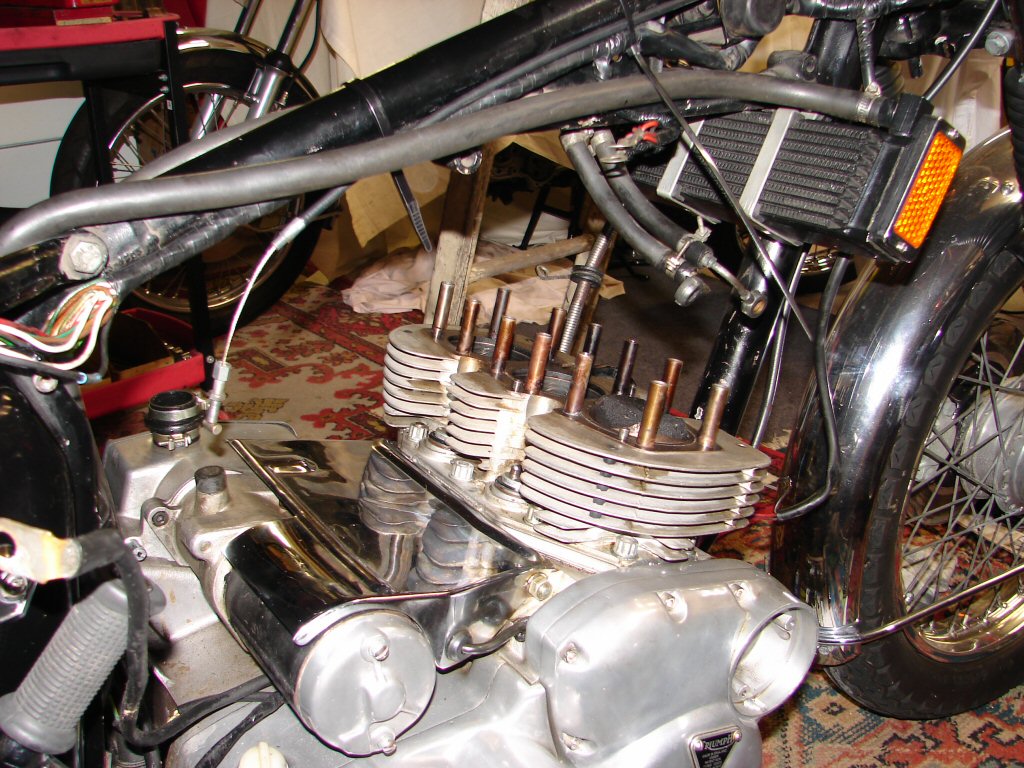
Beyond here there was another issue that caught my attention. For some reason, someone had fitted some non-standard o rings in the fork top nuts. From the look it had been done a very long time ago. Age had caused the o rings to distort and swell outside their intended location, which had in turn prevented the fork stanchions from being located in their correct place. This effectively alters the steering head geometry and effects the steering of the bike. Not by a lot, but it simply should not be so.
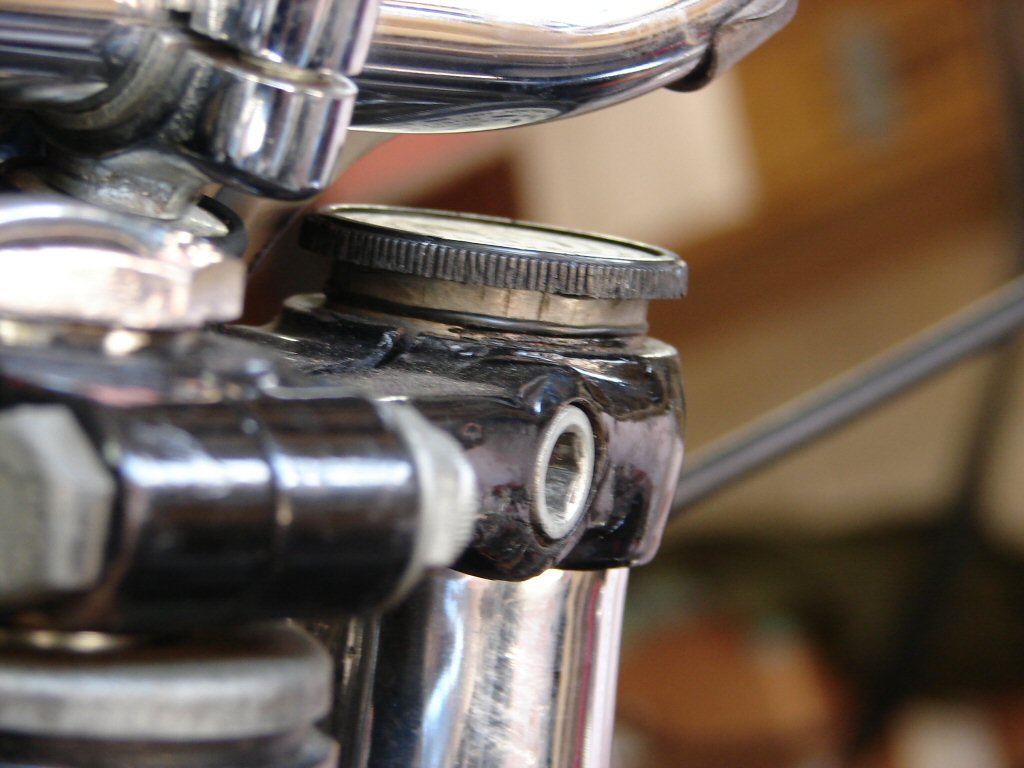
I put all these things to rights until I was happy that - if it were my bike - I would be satisfied that it was the best it could be. There were some carb tuning issues that I was able to adjust out to best effect, and it became a very compliant machine and a joy to operate.
I was lucky enough to undertake a delivery trip of 200 miles, and the smile did not leave my face for the whole thing. A very sweet example of a sorted machine.
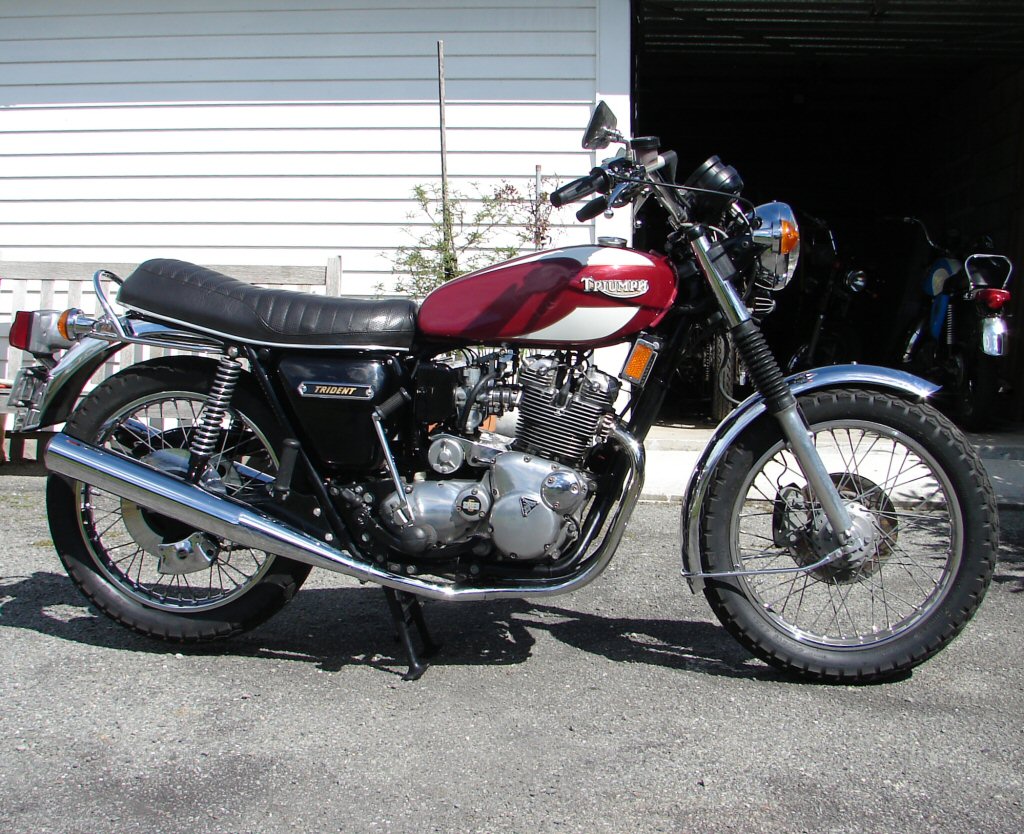
Whilst I lament the fact that often owners have received less for their money than they should have, I am most happy to have been an instrument in rectifying such a situation. This bike had the potential to be an almost perfect example of a T160 Trident.
I had the privilege of moving it closer to that target.